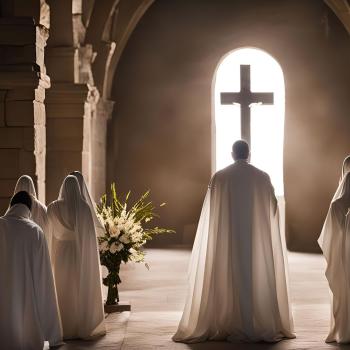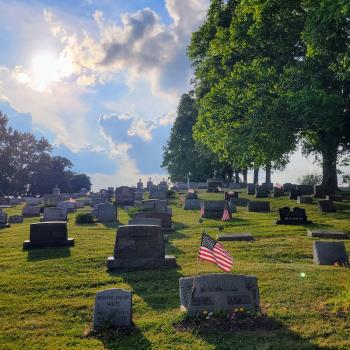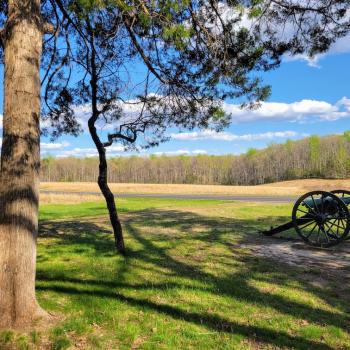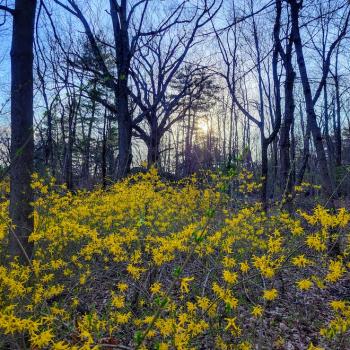“An angel showed me the river of life-giving water,
sparkling like crystal, flowing from the throne of God
and of the Lamb down the middle of the street,
On either side of the river grew the tree of life
that produces fruit twelve times a year, once each month;
the leaves of the trees serve as medicine for the nations.
Nothing accursed will be found anymore.
The throne of God and of the Lamb will be in it,
and his servants will worship him.
They will look upon his face, and his name will be on their foreheads.
Night will be no more, nor will they need light from lamp or sun,
for the Lord God shall give them light,
and they shall reign forever and ever.”— Revelation 22:1-5, First Reading for the Saturday of the 34th Week of Ordinary Time
A tree that produces fruit twelve times a year, once each month… my eschatological curiosity was piqued. A monthly cycle, not of blood, but of fruit.
I thought of a hypothetical posed during a panel at the Convivium Terra Incognita gathering last month: will women have their periods in the new heavens and new earth? One woman noted that the medieval mind believed that the celestial spheres would cease turning then, and therefore their answer would be no. But in the very last liturgy of the year, John’s vision seems to tell us something very different. Cycles will not cease to turn. But their turning will no longer involve death as a prerequisite to rebirth. Life eternal does not stand still; it keeps giving new life.
What more might this glorious conclusion to Scripture and the liturgical year have to teach us about how God created us to be, and what we should aspire to as Christians gradually being transformed into Christ’s resurrected likeness? The metaphorical imagery of Revelation, like that of the first chapters of Genesis, does not lend itself to conclusive interpretations. (Not that many Christians haven’t tried, but the results are misleading and fairly disastrous at times.) But their artistry does lend itself to a holy exercise of the imagination.
It just so happens on this day last year, I wrote an exploration of the true differences between male and female bodies, and what God may be trying to teach us through this difference, with clues from the first chapters of Genesis. I concluded “in creating us male and female, God is revealed as self-giving both in nature and in the exercise of the will. We are given a powerful Eucharistic sign of self-giving that endures, despite of sin, in the female body, and in the New Covenant free-will offering of the New Adam to the New Eve, the Church and Body of Christ.” This provides a basis for me to compare and contrast the vision of our final glorified state today.
The Tree of Life is found in both Genesis 2 and Revelation 22. Not to be confused with the Tree of the Knowledge of Good and Evil (as the priest did in the homily I heard this morning), the Tree of Life was given to Adam and Eve to eat originally. (Cf. Genesis 2:9, 16-17) They were expelled from Eden specifically so they would not attain a cursed immortality from eating of the Tree of Life in a corrupted state. (Cf. Genesis 3:22-23) At the end of Revelation, all evil having been conquered and expelled from the universe, death too is finally conquered by bringing God’s people back to the Tree of Life.

The image of the Tree of Life is a strange one in Revelation, however, for a river cuts right through it. I imagine two great trunks and branches sharing a single root structure underneath the crystal clear flow. The true unity of the two mysteriously produces a never-ending cycle of fruit. No distinctions are made between the two sides, yet each branch and each leaf is unique. Revelation does not recapitulate Genesis’s mention of “male and female” among God’s people, for here every person is Bride, and the Lamb alone is Groom.
Are the Bride and the Tree of Life symbolizing the same mysterious organism of all the redeemed? For the Tree gives fruit like a bride, and the Lamb takes up His throne in it. Here the people of God “look upon His face” in perfect intimacy. An intimacy that produces perpetual fruit. What is this fruit? Eye hath not seen…
What is crystal clear as the river is the end of the necessity of death. Not the cycle of blood flowing from women’s bodies. Not the death of men by instruments of war. Not even the haunting beauty of dying leaves. But something new is still needed to replace the allure of hope, the bittersweet of dying and rising.
What I see in this vision is that we will not merely praise God in Heaven, but we will bear Him fruit that is “pleasant to the sight and good for food” (cf. Gn 2:9). This fruit is not produced by sexual difference between men and women, for “they neither marry nor are given in marriage, but are like angels in heaven,” (Mt 22:30, Mk 12:25, Lk 20:34-35) but by our receptivity, each of us, to the living waters of the Spirit. Rather than pairing up in exclusive bonds, we will all endlessly feed each other with this fruit of perfect love.















